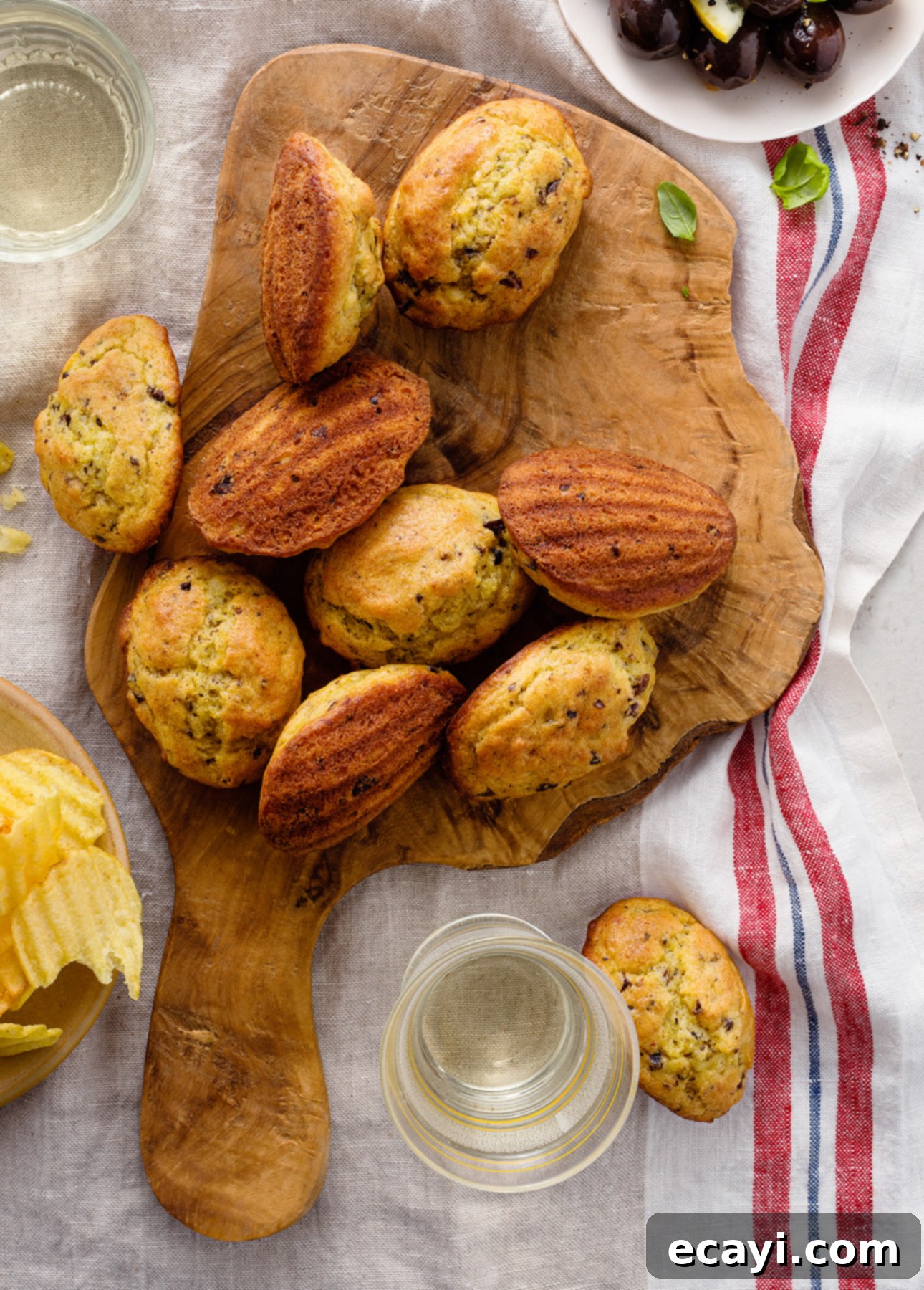Delicious Savory Madeleines: The Ultimate Guide to Perfect French Aperitif Bites
Experience the exquisite taste of France with these elegant savory madeleines. Addictively fluffy, perfectly salty, and rich with cheesy flavor, these delightful bites are surprisingly easy to master. Even better, they’re incredibly make-ahead friendly, making them an ideal choice for effortless entertaining. Elevate your next gathering or French-themed happy hour with these irresistible treats!
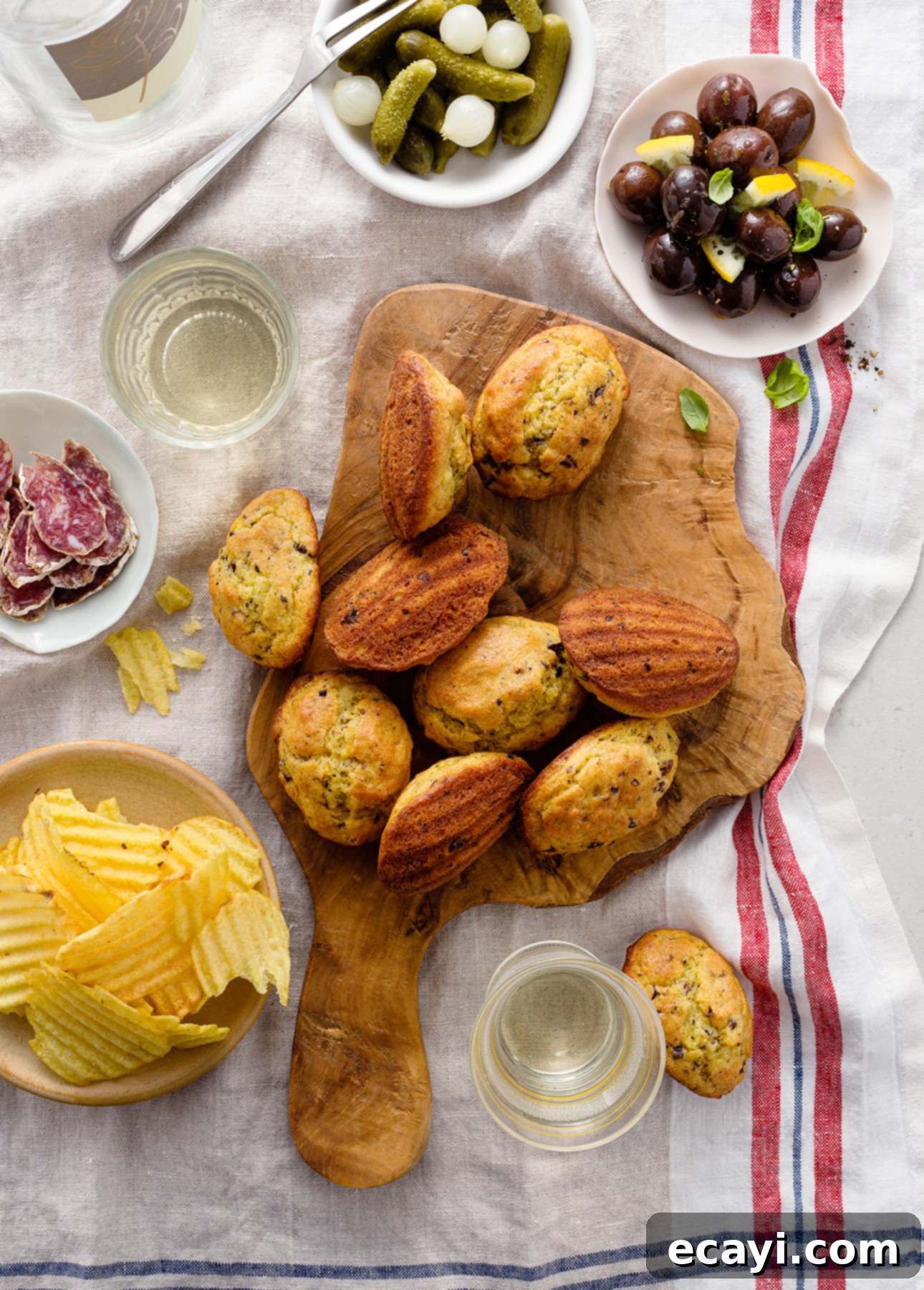
This post contains affiliate links. Full disclosure is at the bottom of the article.
For many, madeleines conjure images of delicate, shell-shaped sweet cakes, often dipped in tea or coffee. But what if these iconic French pastries took a savory turn? A few years ago, while crafting a cookbook dedicated to l’apéro—the beloved French tradition of happy hour—the idea of transforming classic French snack cakes into savory delights became a fascinating challenge. While some experiments, like savory financiers, proved tricky, the concept of savory madeleines was an instant, resounding success. The delightful combination of their signature airy texture with a burst of cheesy, herby flavor immediately captured hearts and palates.
Madeleines are truly a staple in French bakeries, known for their distinctive shell shape and versatile appeal. Traditionally, they are sold in bags and enjoyed on countless occasions: as a sweet accompaniment to brunch, a quick afternoon snack, a light dessert, or a thoughtful homemade gift. My passion for madeleines runs deep, having previously shared comprehensive tips for making classic sweet madeleines at home, along with numerous seasonal variations. Given the inherent adaptability of the sweet version, it’s perhaps no surprise that savory madeleines offer an equally addictive and delicious experience.
Crafting perfectly pillowy savory madeleines involves following the same fundamental baking techniques as their sweet counterparts. The key difference lies in the flavoring: instead of sugar, the batter is infused with robust cheese, fragrant herbs, and other savory ingredients. The result is a uniquely charming, bite-sized cake that’s ideal for a French-inspired happy hour, elegant picnics, thoughtful homemade gifts, or any occasion that calls for a special touch. These little conversation starters are guaranteed to impress your guests and awaken their taste buds with their sophisticated yet approachable flavors.
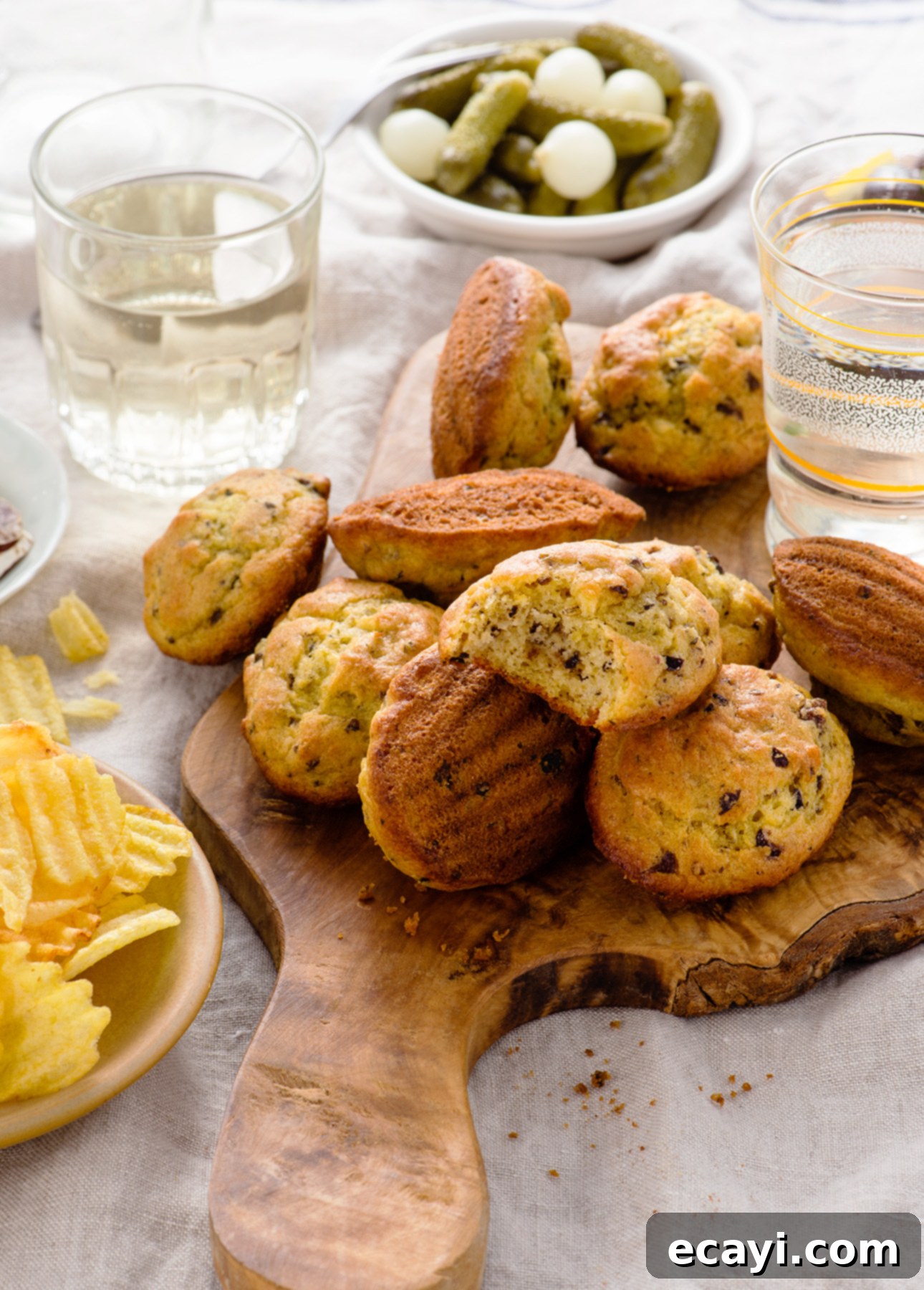
Essential Tips for Baking Irresistible Savory Madeleines
Do I Need a Special Madeleine Pan? Exploring Pan Alternatives
Many home bakers find themselves with a collection of specialized pans, often wondering if yet another is truly necessary. While a traditional madeleine pan is undeniably crucial for achieving that iconic shell shape, you absolutely can make delicious savory madeleines without one. A standard muffin pan can step in beautifully. When using a muffin pan, ensure you generously grease and lightly flour each cup, similar to preparing a madeleine pan. For a texture that closely mimics authentic madeleines, add only a small amount of batter to each cup—this creates thinner cakes with delightfully crisp edges. If you’re committed to achieving the signature hump, even in a muffin pan, replicating the temperature shock by freezing the pan and chilling the batter (as detailed in the recipe) will help create that distinctive rise.
Mastering the Signature Hump: Secrets to Perfectly Plump Madeleines
The pronounced hump on the back of a madeleine is its hallmark, often leading to an undeserved reputation for being a fussy pastry. In reality, baking perfectly plump madeleines is surprisingly straightforward once you understand the core principle. This signature hump is primarily achieved through a significant temperature shock: a freezing cold pan combined with cold madeleine batter, immediately placed into a very hot oven. The rapid heat causes the edges of the batter to set quickly, while the center continues to rise, pushing upwards to form the hump. While it might be tempting to rush the process and skip the chilling and freezing steps, patience is truly a virtue here. Haste will likely result in madeleines that are less fluffy, lighter, and lack that desired height. However, a gentle reminder: even flatter madeleines are incredibly delicious. Never discard a batch just because they didn’t rise as much as you hoped; every batch offers a learning opportunity, and your next one will be perfect with these tips in mind!
Preventing Sticking: Ensuring Your Savory Madeleines Release Perfectly
Despite many modern madeleine pans being marketed as “nonstick,” the most reliable way to guarantee your madeleines pop effortlessly out of their molds is through meticulous preparation: generously buttering and lightly flouring each cavity. This step is even more critical for savory madeleines due to their higher cheese content, which can make them particularly prone to sticking. To properly prepare your pan, whether it’s a madeleine or muffin pan, use a pastry brush to apply a thin, even layer of very soft—but *not* melted—butter into every nook and cranny. Next, lightly sift flour over the entire pan. Gently tap the edges of the pan on your countertop to ensure the flour coats the butter evenly. Finally, invert the pan over your sink or a clean work surface and tap firmly to shake off any excess flour, leaving only a thin, uniform coating.
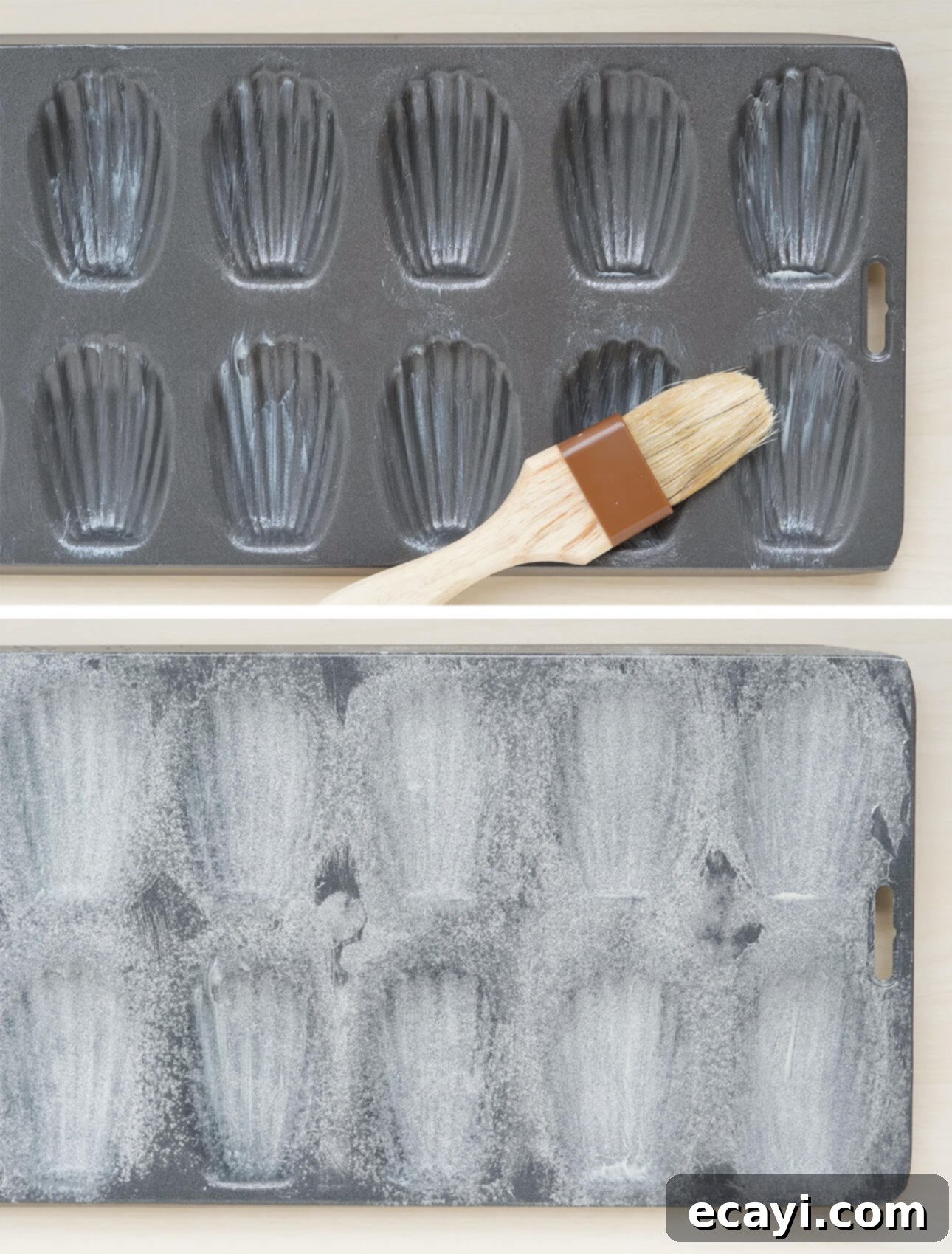
Silicone vs. Metal Madeleine Pans: Which is Best for the Hump?
For the fluffiest, most dramatically humped savory madeleines, metal pans are generally superior. This is because metal conducts cold much more efficiently, allowing the pan to become truly icy in the freezer. This intense cold creates a more significant temperature shock when the madeleines are transferred to the hot oven, which is the secret to achieving that coveted rise. Silicone pans, while convenient for their natural nonstick properties, simply cannot reach the same low temperatures and therefore won’t produce as pronounced a hump. However, if a silicone madeleine pan is what you have on hand, don’t hesitate to use it! Just be aware that even with silicone, a delicate pastry like savory madeleines could still adhere and break during unmolding. Always take the time to thoroughly butter and lightly flour your silicone pan before use, just as you would with a metal pan, to ensure a smooth release and beautiful results.
Make-Ahead Marvels: Preparing and Storing Savory Madeleines
Here’s some truly delightful news for busy home cooks: unlike their more delicate sweet counterparts, classic sweet madeleines, savory madeleines are wonderfully make-ahead friendly. They can even be frozen! This longevity is largely thanks to two key ingredients: olive oil and cheese. Both contribute to the madeleines’ ability to retain moisture and tenderness for a significantly longer period after baking. Savory madeleines are truly at their peak when served warm, allowing their complex flavors to shine. You can bake them, unmold, let them cool completely, and then store them in an airtight container. They’ll keep beautifully in the refrigerator for up to 3 days, or you can freeze them for up to 1 month. To serve, simply rewarm the madeleines in a 300°F (150°C) oven for 5 to 8 minutes. This gentle reheating process will restore their pillowy-soft texture and reawaken all those delicious savory aromas. Another fantastic advantage is that the savory madeleine batter itself can be refrigerated for up to three days, offering the incredible flexibility to bake only what you need, ensuring a continuous supply of freshly baked treats over several days. A truly dreamy proposition for spontaneous entertaining or a gourmet snack!
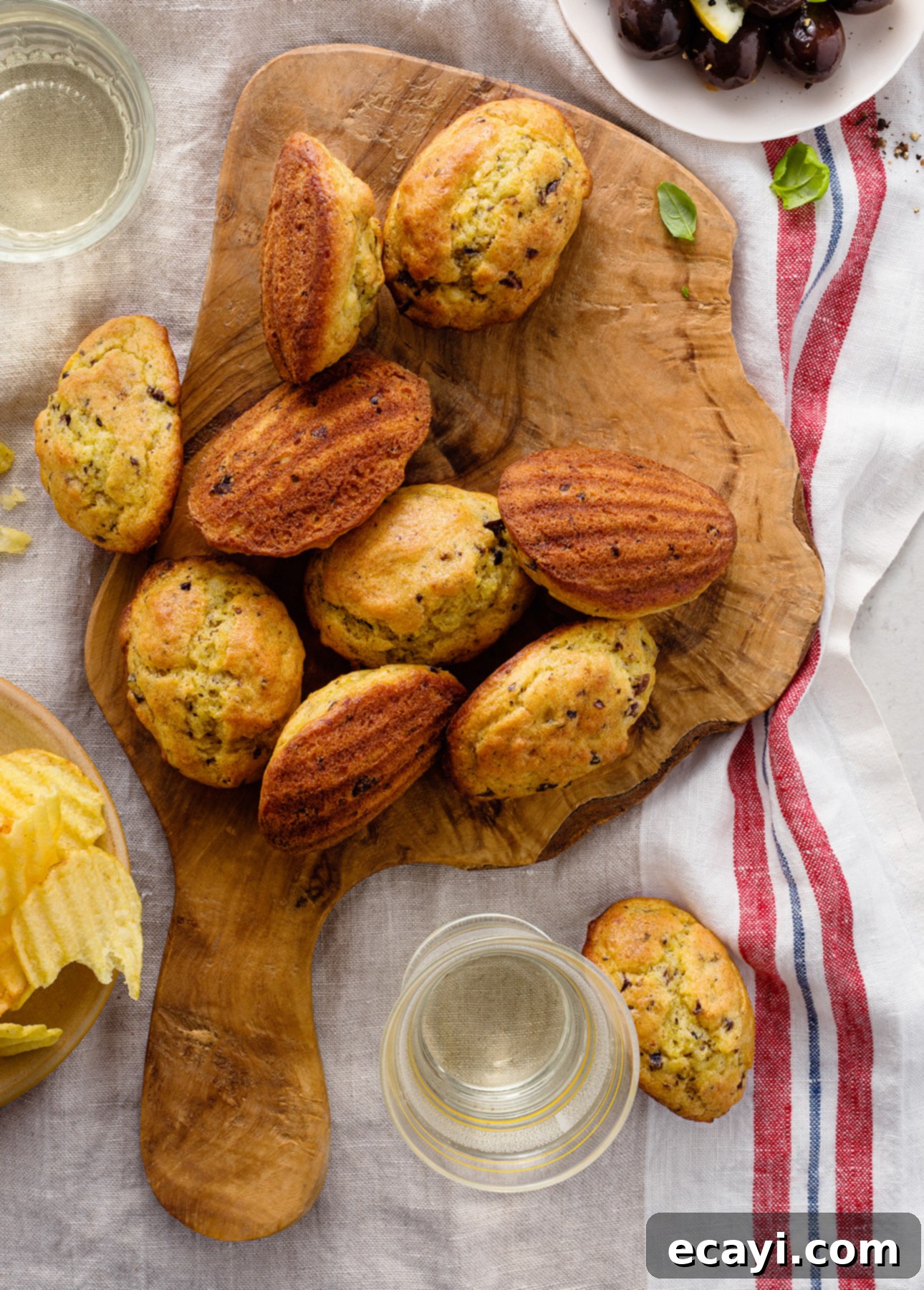
Can Savory Madeleines Be Frozen? Absolutely!
Yes, absolutely! Freezing savory madeleines is a fantastic way to prepare them in advance and have them ready for any occasion. Once baked, allow the madeleines to cool completely to room temperature. Then, transfer them to an airtight container or a freezer-safe bag, ensuring they are well-sealed to prevent freezer burn. They can be frozen for up to one month without significant loss of quality. When you’re ready to enjoy them, there’s no need to thaw. Simply place the frozen madeleines directly into a preheated 300°F (150°C) oven and rewarm for approximately 8 minutes. This quick reheat will bring them back to their freshly-baked texture, making them tender on the inside and slightly crisp on the edges, with all their savory flavors fully revived.
Creative Flavorings: Beyond Olives for Savory Madeleines
While chopped black olives provide a wonderful briny depth to savory madeleines, the beauty of this recipe lies in its versatility. You can easily customize the flavor profile to suit your taste or what you have on hand. Here are some fantastic alternatives to olives that will add a delightful twist:
- Prepared tapenade: For an intense burst of Mediterranean flavor with minimal effort.
- Pesto: A vibrant herb and nut blend that adds color and freshness.
- Finely chopped fresh herbs: Consider basil for an Italian touch, Italian parsley for brightness, oregano for a classic Mediterranean aroma, or thyme for an earthy note. Feel free to mix and match!
- Cooked pancetta or bacon: Finely chopped and rendered crispy, these add a smoky, salty richness.
- Lemon zest: Provides a fragrant, zesty lift that brightens the entire flavor profile.
You can even combine several flavorings for a more complex profile. However, it’s crucial to adhere to the total amount of 1/4 cup (60 ml) for any chosen flavoring. This quantity is carefully calculated to ensure the madeleine batter remains light and airy. Adding too much will weigh down the batter, potentially leading to denser, flatter madeleines.
Choosing Your Cheese: Varieties for Optimal Flavor and Texture
Parmigiano-Reggiano is a top choice for these savory madeleines due to its intense, nutty flavor and its finely grated, almost powdered texture, which integrates seamlessly into the batter. However, feel free to explore other strong-flavored hard cheeses that will similarly infuse the madeleines with character. Excellent substitutes include:
- Comté: A French semi-hard cheese with a complex, nutty, and slightly sweet flavor.
- Gruyère: Another Swiss cheese known for its creamy, nutty, and earthy notes.
- Emmenthal: Famous for its distinctive holes and mild, nutty, buttery taste.
Regardless of your choice, the key is to ensure the cheese is very finely grated. Larger shreds or chunks can weigh down the madeleine batter, hindering its rise and resulting in a less airy texture. For the most accurate results in baking, especially with cheese, it’s always best to weigh the cheese rather than measuring by volume. This ensures you use the precise quantity needed to achieve the perfect balance of flavor and the desired delicate, fluffy texture.
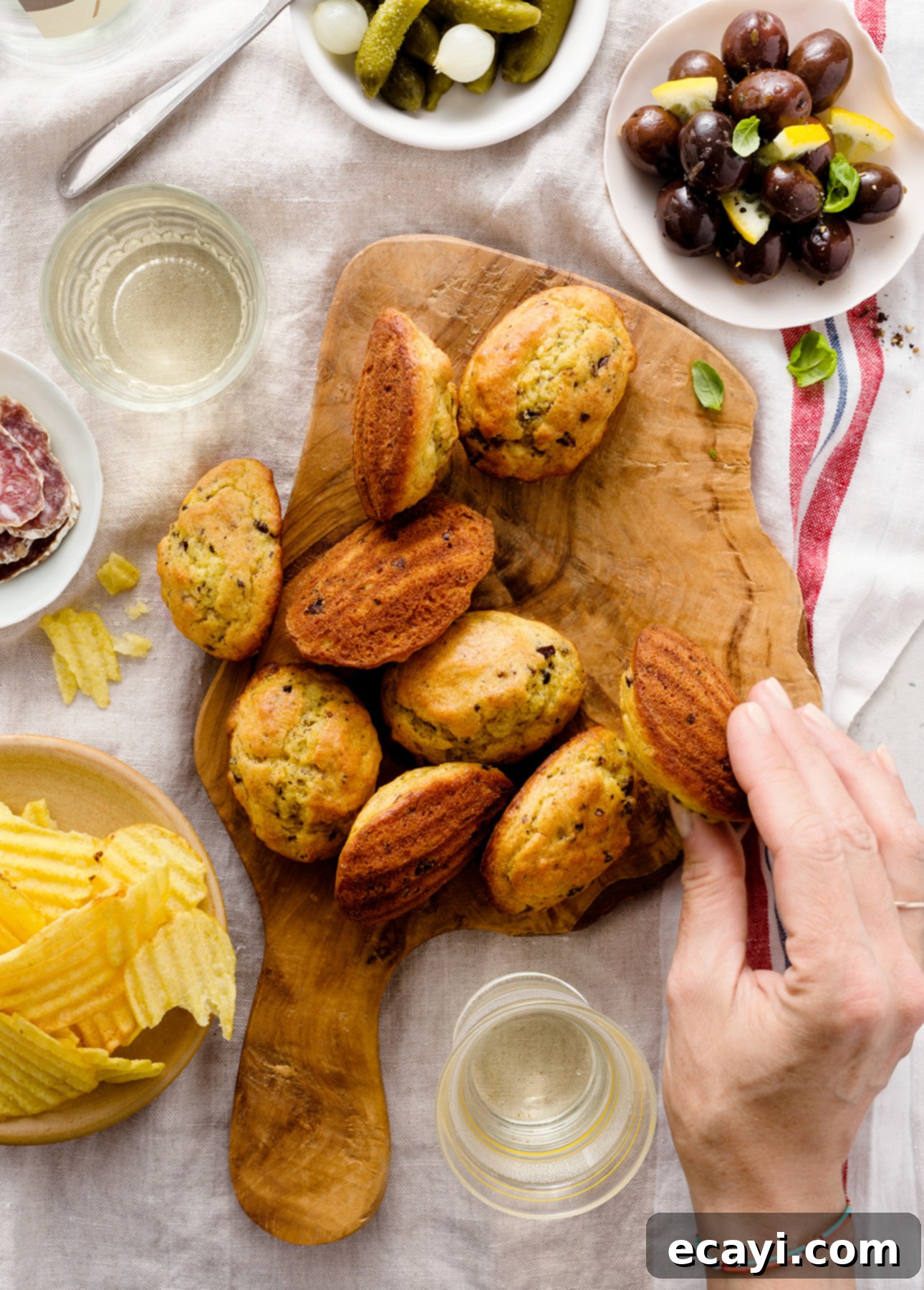
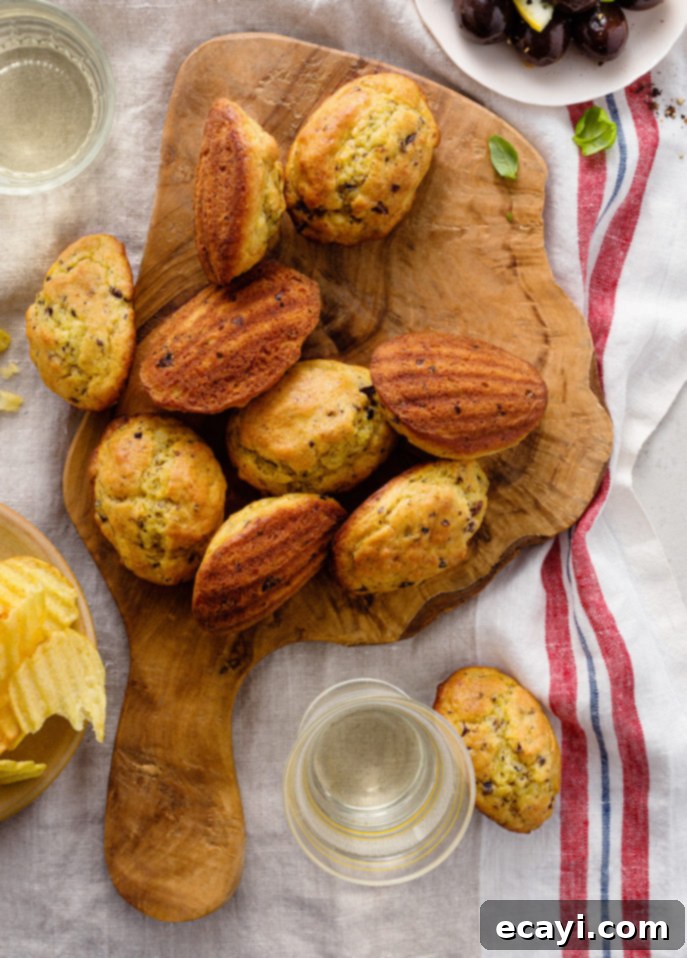
Pin Recipe
Savory Madeleines
Ingredients
- ¾ cup cake and/or pastry flour
- 1 tsp Herbes de Provence
- 1 tsp baking powder
- 1 tsp kosher salt, or fine sea salt
- ¼ tsp baking soda
- Freshly ground black pepper
- 3 eggs
- 1 tbsp granulated sugar
- ¼ cup extra-virgin olive oil
- ½ cup very finely grated Parmigiano-Reggiano cheese (about 1 oz), or another finely grated, strongly flavored cheese, such as Comté, Gruyère, or Emmental
- ¼ cup very finely chopped pitted black olives, such as Niçoises, or green olives (see variation ideas in the Note, below)
Instructions
-
In a bowl, whisk together the flour, baking powder, salt, baking soda, and pepper; set aside.
-
In a large mixing bowl, beat the eggs and sugar together for 3 minutes, or until the eggs are pale and fluffy. Whisk in the olive oil. Using a spatula, add the reserved dry ingredients a third at a time, folding between each addition until just incorporated. Fold in the grated cheese and chopped olives, mixing just until the flavorings are well distributed. Cover the mixing bowl with plastic wrap and refrigerate the batter for 30 minutes to 1 hour, or up to overnight.
-
Preheat the oven to 400°F. Lightly grease a madeleine pan with cooking spray; use a brush to make sure the oil gets into every nook and cranny. Sprinkle with flour then tap out the excess. Place the pan in the freezer for 10 minutes.
-
Take the prepared mold out of the freezer. Take the batter out of the fridge. Using a spatula, gently mix the batter to remove excess bubbles that may have formed while the batter was resting. Fill each shell-shaped cavity with about 1 heaping tablespoon of batter (the cavities should be about three-quarters full). Return the remaining batter to the fridge.
-
Bake until the madeleines are puffed and golden, about 12 minutes. Unmold as soon as you take the madeleines out of the oven by turning the mold upside down and banging one side on a work surface. Gently coax uncooperative madeleines out with the tip of a butter knife. Let the madeleines cool on a wire rack.
-
To bake the remaining madeleines, run the madeleine mold under cold running water to make it easier to handle. Clean it, lightly grease again, and return to the freezer for 10 minutes. Fill with more madeleine batter and bake as indicated.
-
SERVING: Serve the savory madeleines warm, or at room temperature.
-
STORAGE: Store baked savory madeleines in an airtight container. Refrigerate for up to 3 days, or freeze for up to 1 month. To return the madeleines to their freshly baked flavor and texture, rewarm in 300°F (150°C) for 5–8 minutes.
-
NOTE: You can substitute a variety of ingredients for the chopped olives: prepared tapenade, pesto, finely chopped fresh herbs (basil, Italian parsley, oregano, thyme, and so on), cooked pancetta or bacon, chopped finely, or lemon zest. You can even combine flavorings.
Whatever you choose, make sure to make it a total amount of 1/4 cup (60 ml) as stated in the recipe to avoid weighing down the savory madeleine batter.
Did you make this?
Tell me how you liked it! Leave a comment or take a picture and tag it with @foodnouveau on Instagram.
Savory madeleines offer a delightful twist on a French classic, bringing elegance and rich flavor to any occasion. With these detailed tips and the versatile recipe, you’re well-equipped to bake perfect batches, whether for a cozy night in or a sophisticated gathering. Enjoy the process and the delicious results!
Disclosure Notice: This site is a participant in the Amazon Associates Program, an affiliate advertising program designed to provide a means for the site to earn fees by linking to Amazon and affiliated sites.
If you click on an affiliate link, I may earn advertising or referral fees if you make a purchase through such links, at no extra cost to you. This helps me creating new content for the blog–so thank you! Learn more about advertising on this site by reading my Disclosure Policy.
